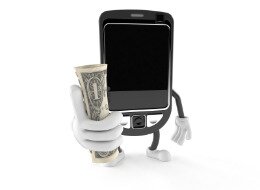
by Sarah Kessler / Mashable
 eBay announced its most interesting mobile shopping trends of 2010 today. Among other topics, the company analyzed holiday season spending and shopping reactions to cultural events like Valentine’s Day, the World Cup and Apple’s iPad release.
eBay announced its most interesting mobile shopping trends of 2010 today. Among other topics, the company analyzed holiday season spending and shopping reactions to cultural events like Valentine’s Day, the World Cup and Apple’s iPad release.
The trends are based on the total value of items purchased using eBay’s mobile app, which more than 30 million people have downloaded. eBay spotted them using an interactive heat map it developed to demonstrate global mobile shopping in the top 20 of its shopping categories.
Sporting events were one area of cultural event the company found drove mobile sales. During the Winter Olympic Games in Vancouver, sales in the sports and memorabilia category peaked in Canada. During the Tour de France, the category peaked in France, and During the World Cup, where Germany placed third, the category peaked in Germany.
Gadget releases also powered sales. After the iPad debuted on April 4, there were more mobile sales in the consumer electronics category than any other day this year. Similarly, when the iPhone 4 launched in the U.S. on June 24, the cellphones and accessories category hit its peak as people flocked to eBay to buy new and pre-owned iPhones.
The most interesting finding when it came to Valentine’s Day was not related to jewelery or chocolate, but video games. Apparently geeks, perhaps reacting to a bevy of special online gaming tournaments, felt the need to stock up. eBay’s mobile app shoppers spent 68% more on video games in the week leading up to Valentine’s Day than they did last year.
Another impressive finding was the growth of mobile sales this holiday season. eBay’s mobile app sold nearly $100 million of merchandise in the U.S. during the month before Christmas, which represents an increase of 134% over last year at the same time. Considering that last year all U.S. mobile sales from all retailers all year long totaled about $1.2 billion, eBay alone selling about 10% of that in one month likely signifies an impressive growth rate for mobile commerce in general this year.


Find us here too!